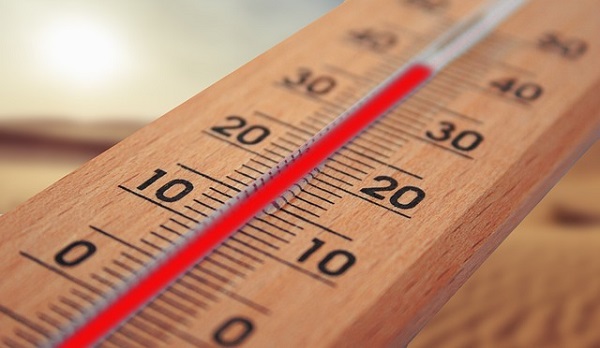
The Luxembourg Ministry of Health recently presented an updated heatwave plan with measures to be taken, particularly for vulnerable people, in the case of a level 1 (preparatory phase), level 2 (heat warning), level 3 (high heat alert) and level 4 heatwave (exceeding the means).
For the level 1 heatwave plan, the ministry said it planned to stay in close contact with the Health Directorate, the COPAS federation of care service providers and the Luxembourg Red Cross. By keeping in close connection with MeteoLux, the ministry will send pre-alerts in the case of the presence of a hot air mass. In addition, they would signal this in hospital emergency departments and to the Grand Ducal Fire and Rescue Corps (CGDIS) between 1 June and 15 September 2023.
Moreover, the ministry aims to provide information sheets for the general public, with specific sheets as part of a specialised information campaign. A “visit/hydration” service will be implemented for people over 75 years of age. The municipalities will offer more information regarding registration. The ministry reported a total of 952 registrations thus far, and they noted it is still possible to register. The ministry aims to monitor daily maximum temperatures, maximum temperatures over 24 hours, ozone levels in the air, PM10 (particulate matter in the air that can irritate breathing and eyes), hospitals, the CGDIS. It also plans to monitor mortality rates. Preliminary home visits reportedly began on 1 June 2023.
Useful phone numbers are as follows:
- for registrations on lists for home visits via the Luxembourg Red Cross: 2755;
- specific information for establishments and event organisers (sanitary inspection): 247-85653;
- for any information on high temperatures/heatwaves for the general public (health helpline): 247-65533.
In case of a level 2 heatwave announced by MeteoLux, with maximum temperatures between 33-35°C with over 23°C over a 24-hour period (“tropical night”), the ministry will issue reminders of preventive measures. Vulnerable people will then receive special attention.
For a level 3 heatwave plan considering a high alert, once triggered by the Health Directorate, will launch home visits. In the case of temperatures over 35°C with over 23°C over a 24-hour period, a heightened health monitoring will be introduced, involving hospitals and the CGDIS for the foreseeable duration of the episode. Communication would then be amplified.
A level 4 heatwave plan would exceed the country’s current means, according to the ministry, leading to the involvement of the High Commission for National Protection (Haut-Commissariat à la protection nationale - HCPN). This would require additional resourcing, involving the Government Council and municipalities, the CGDIS, the army, etc.
The ministry noted that special considerations need to be taken in the case of vulnerable people under the age of 75, people experiencing homelessness (possibly a “Summeraktioun” – summer programme to allow people to find shade, hydrate and keep cool during a heatwave, and involving the Ministry of Family Affairs, Integration and the Greater Region). Maps of drinking water points could be indicated, the health ministry noted.
Taking note of the levels of ozone in the air from May to August is another consideration in order to protect more vulnerable people. Ozone may cause toxicity for the lungs, kidneys, brain, eyes and may be particularly harmful during physical exertion (as it increases the volume of inhaled air up to 20 times). In the case of high ozone levels in the air (EU alert threshold value: 240 μg/m3), the ministry recommended avoiding physical activity between 12:00 and 20:00, and to stay indoors (reduces O3 by 50%). For public health concerns, the limitation of car travel would be recommended in this case, respectively limiting the speed of travel. Using the app “Meng Loft” (my air) may also help to keep updated on the air quality index and other factors, according to the ministry.








